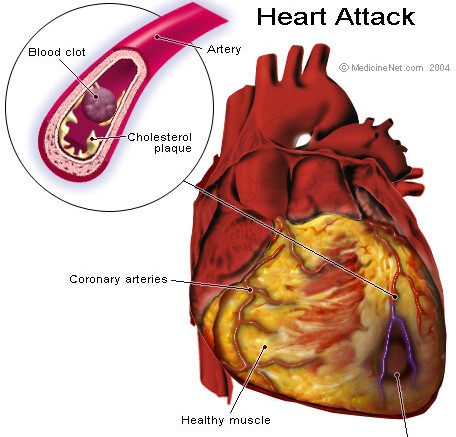Inferior vena cava filters (IVC filters) are metal devices that are implanted in the largest venous vessel in the human body: the vena cava. Their purpose is to stop blood clots traveling from inferior limbs to reach the lungs, causing a potentially fatal pulmonary embolism. Instead of saving people’s lives, however, several of these spider-like filters keep posing their lives at risk as they break down inside the body. Way too often their metallic fragments start roaming arteries and veins until they log inside the heart and lungs, causing serious injuries. For this reason, many patients filed their IVC filter lawsuits against the two main manufacturers of these medical devices, C.R. Bard and Cook Medical.
In our other article we already explained how failure and breaking ratio of these devices is absurdly high: almost half (40%) of Bard Recovery IVC filters fractured within 5.5 years, causing serious injuries like a punctured blood vessel. Many medical experts actually refuse to use these devices because of their extremely high rates of failure. Even though the original purpose of these surgical implements was to give a temporary alternative to patients who cannot be put under anticoagulants medications, they’re often left in place for longer times. When that happens, it’s only a matter of time before the device will fail and cause some more or less serious injury to the patient (or even his death). Filter placement had been associated with over 900 adverse events such as embolization, fracture and migration, including 27 deaths. For this reason in 2014 the U.S Food and Drug Administration (FDA) issued a warning explaining that these devices should not be left in place for too long. Removing them after the risk of pulmonary embolism is over does, in fact, reduce the danger for patients by a significant amount.

A Blood Clot in the Heart – Photo by: ravindra gandhi- Source: Flickr Creative Commons
In 2004 C.R. Bard hired Dr. John Lehmann as a medical consultant to prove their IVC filter’s safety. However when the physician acknowledged the devices’ dangerous failures, the company decided to ignore his report and bury it. Federal laws required them to provide the so-called “Lehmann report”, so when NBC news uncovered the ruse it became an evidence as potential criminal fraud. A criminal intent which was further highlighted in 2005, when a Bard’s executive forged the signature of a company regulatory specialist who refused to sign off on an FDA application as she knew how poorly designed and prone to failure it was.
The filter’s approval process was rushed through the infamous 510(k) Clearance, avoiding more accurate controls. This regulatory shortcut allows a pharmaceutical or medical device manufacturer to skip most of the steps required for approval, by proving that their product is “substantially equivalent” to a similar one currently on the market. This simplification process is often abused as a legal loophole to distribute defective devices such as this one, as unscrupulous companies often do not care about patient’s safety.
Since at least 50 IVC filter lawsuits have been filed against the manufacturer C.R. Bard claiming that the Recovery and G2 devices may seriously harm or injury patients, on August 17th all processing have been consolidated into a Multidistrict Litigation in the U.S. District Court of Arizona (MDL No. 2641) presided by U.S. District Judge David G. Campbell.
Article by Dr. Claudio Butticè, PharmD.
REFERENCES
- Young T, Tang H, Hughes R (2010). Young, Tim, ed. “Vena caval filters for the prevention of pulmonary embolism”. Cochrane Database of Systematic Reviews (2): CD006212. doi:10.1002/14651858.CD006212.pub4. PMID 20166079.
- Goldhaber SZ (2005). “Pulmonary thromboembolism”. In Kasper DL, Braunwald E, Fauci AS; et al. Harrison’s Principles of Internal Medicine (16th ed.). New York, NY: McGraw-Hill. pp. 1561–65. ISBN 0-07-139140-1.
- Food and Drug Administration. “Inferior Vena Cava (IVC) Filters: initial Communication: Risk of Adverse Events with Long Term Usage”. United States Food and Drug Administration. Retrieved 2015-03-15.
- Sarosiek S, Crowther M, Sloan JM. “Indications, complications, and management of inferior vena cava filters: the experience in 952 patients at an academic hospital with a level I trauma center.” JAMA Intern Med. 2013 Apr 8;173(7):513-7. doi: 10.1001/jamainternmed.2013.343.
- Nicholson W, Nicholson WJ, Tolerico P, Taylor B, Solomon S, Schryver T, McCullum K, Goldberg H, Mills J, Schuler B, Shears L, Siddoway L, Agarwal N, Tuohy C. “Prevalence of fracture and fragment embolization of Bard retrievable vena cava filters and clinical implications including cardiac perforation and tamponade.”Arch Intern Med. 2010 Nov 8;170(20):1827-31. doi: 10.1001/archinternmed.2010.316. Epub 2010 Aug 9.
- Tam MD, Spain J, Lieber M, Geisinger M, Sands MJ, Wang W. “Fracture and distant migration of the Bard Recovery filter: a retrospective review of 363 implantations for potentially life-threatening complications.” J Vasc Interv Radiol. 2012 Feb;23(2):199-205.e1. doi: 10.1016/j.jvir.2011.10.017. Epub 2011 Dec 20.
Be the first to comment on "IVC filter lawsuits keeps on growing, patients keep being injured"